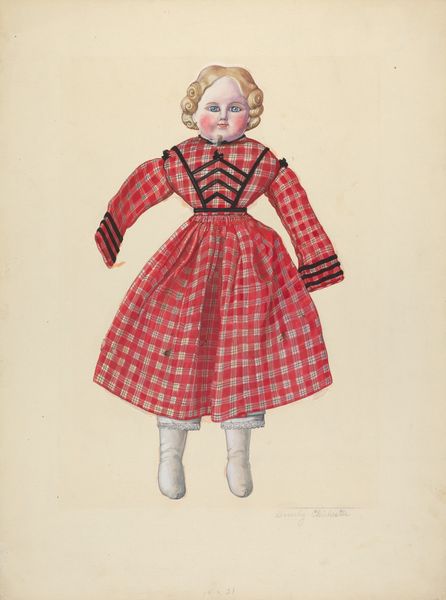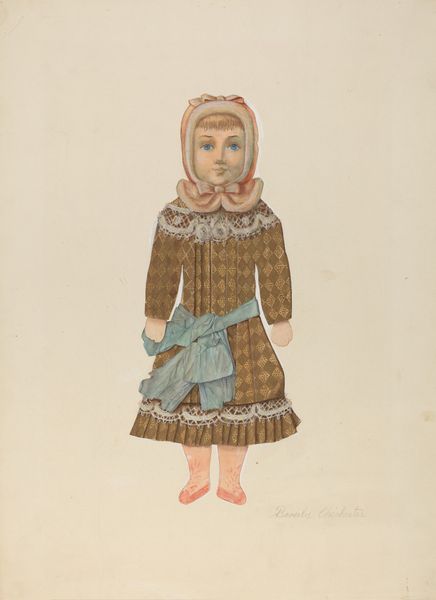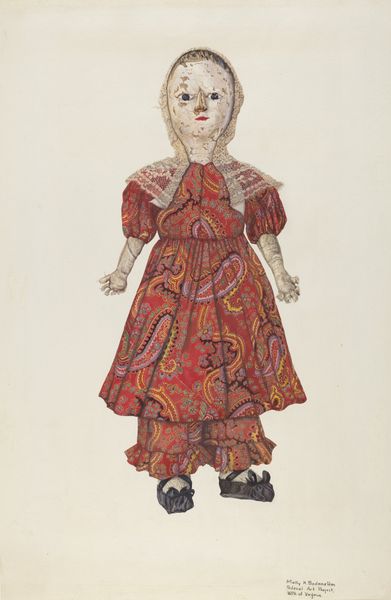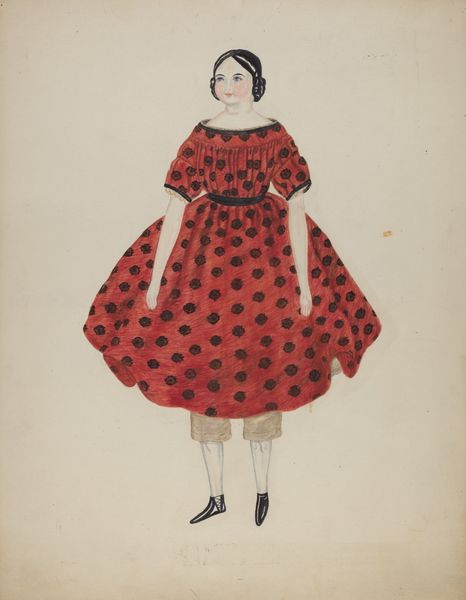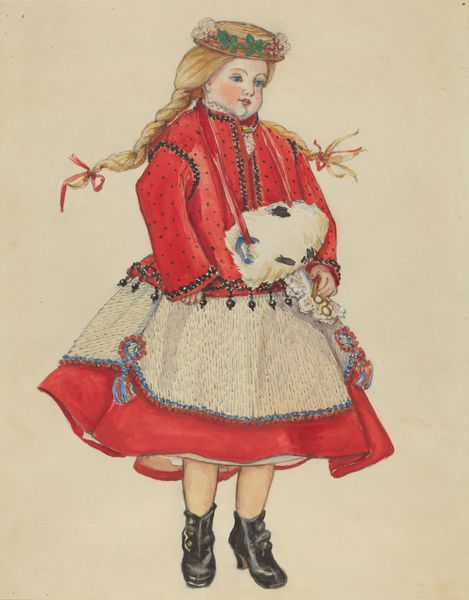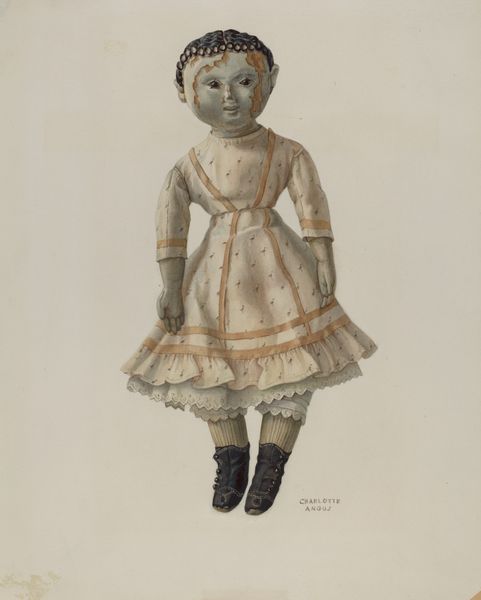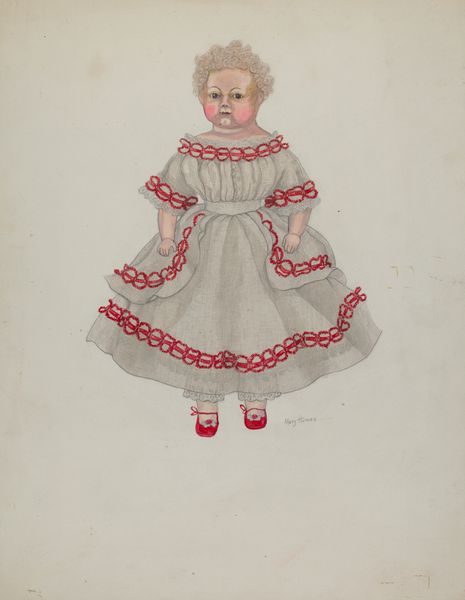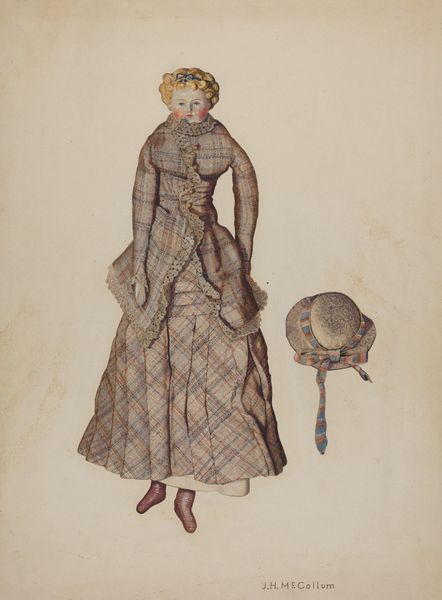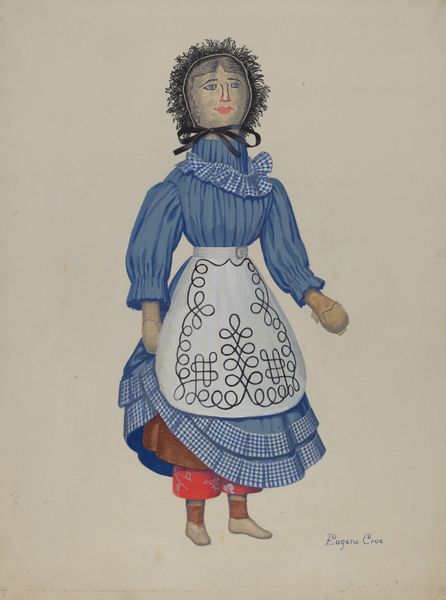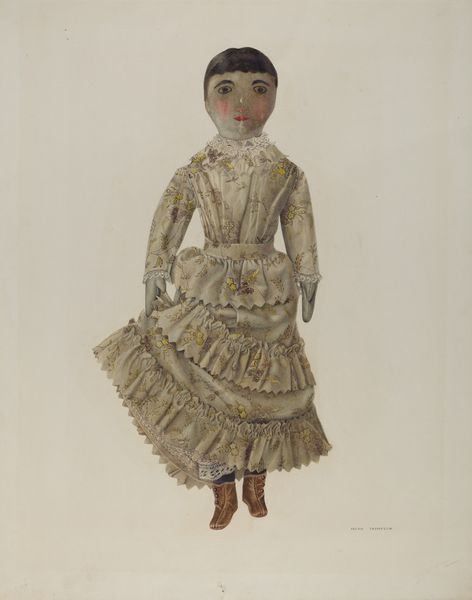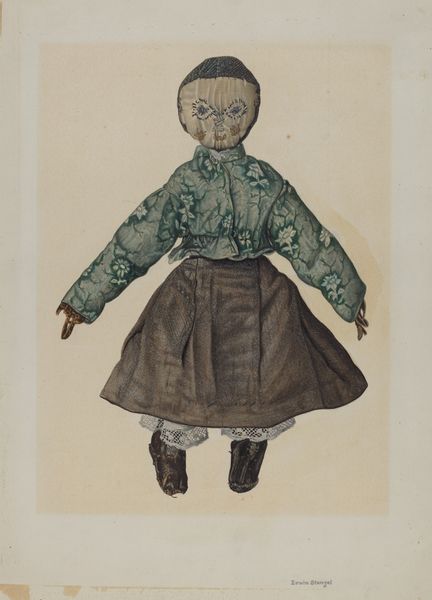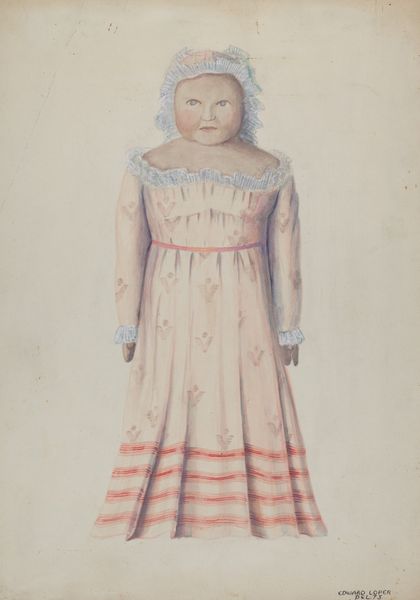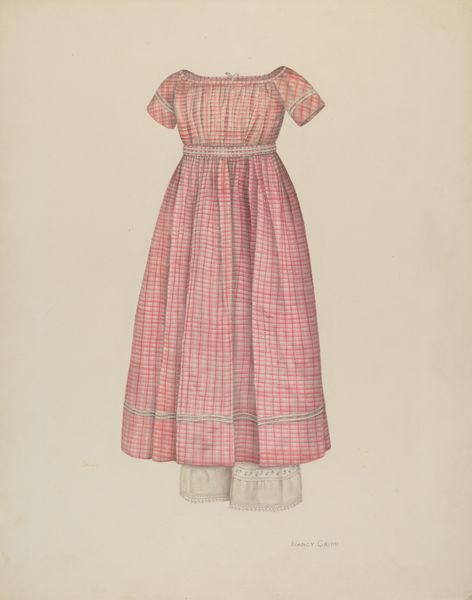
drawing, mixed-media, coloured-pencil
#
portrait
#
drawing
#
mixed-media
#
coloured-pencil
#
coloured pencil
#
folk-art
#
watercolour illustration
#
genre-painting
#
mixed media
Dimensions: overall: 35.5 x 28 cm (14 x 11 in.) Original IAD Object: 8" high
Copyright: National Gallery of Art: CC0 1.0
Editor: Here we have Walter Praefke’s "Doll," a mixed-media drawing from 1938. There's something quite unsettling about its fixed gaze and stiff posture. How do you interpret this work? Curator: It's a fascinating piece, isn't it? Consider the date, 1938. Across Europe, traditional cultures were being fetishized by nationalist movements, even as modern life threatened their existence. Does this doll represent an idealized past, a symbol of innocence frozen in time, even as the world marched towards war? What might the rigid presentation suggest about societal expectations imposed on girls and women? Editor: So, it's not just a portrait of a doll but a reflection of the era's anxieties? The folk-art style adds another layer to that. Curator: Precisely. The seemingly innocent "folk-art" style is itself a loaded concept. Who gets to define "folk"? What purpose does it serve when elevated by the dominant culture? Is this a celebration or a confinement of identity? Editor: I hadn’t considered the loaded nature of the term itself. Is the doll’s clothing significant then, beyond just being quaint? Curator: Absolutely. Think about the colours, the patterns, the details – are they signifiers of a specific regional identity? And who is dictating how that identity is represented? Is this an authentic representation, or a romanticized version intended for consumption? It seems to hint at class, maybe even poverty through the material's simplicity, though that red colour brings warmth and vitality. Editor: That shifts my understanding quite a bit. I was seeing a simple portrait, but now I recognize layers of cultural and political commentary woven in. Curator: It's about looking beyond the surface and questioning the narratives we inherit. Consider how gender, class, and cultural identity intersect to inform even the simplest image. Editor: Thank you, that gives me a completely new perspective on how to approach art from this period. Curator: It's about continually questioning, re-evaluating, and acknowledging the power dynamics embedded within visual culture.
Comments
No comments
Be the first to comment and join the conversation on the ultimate creative platform.
